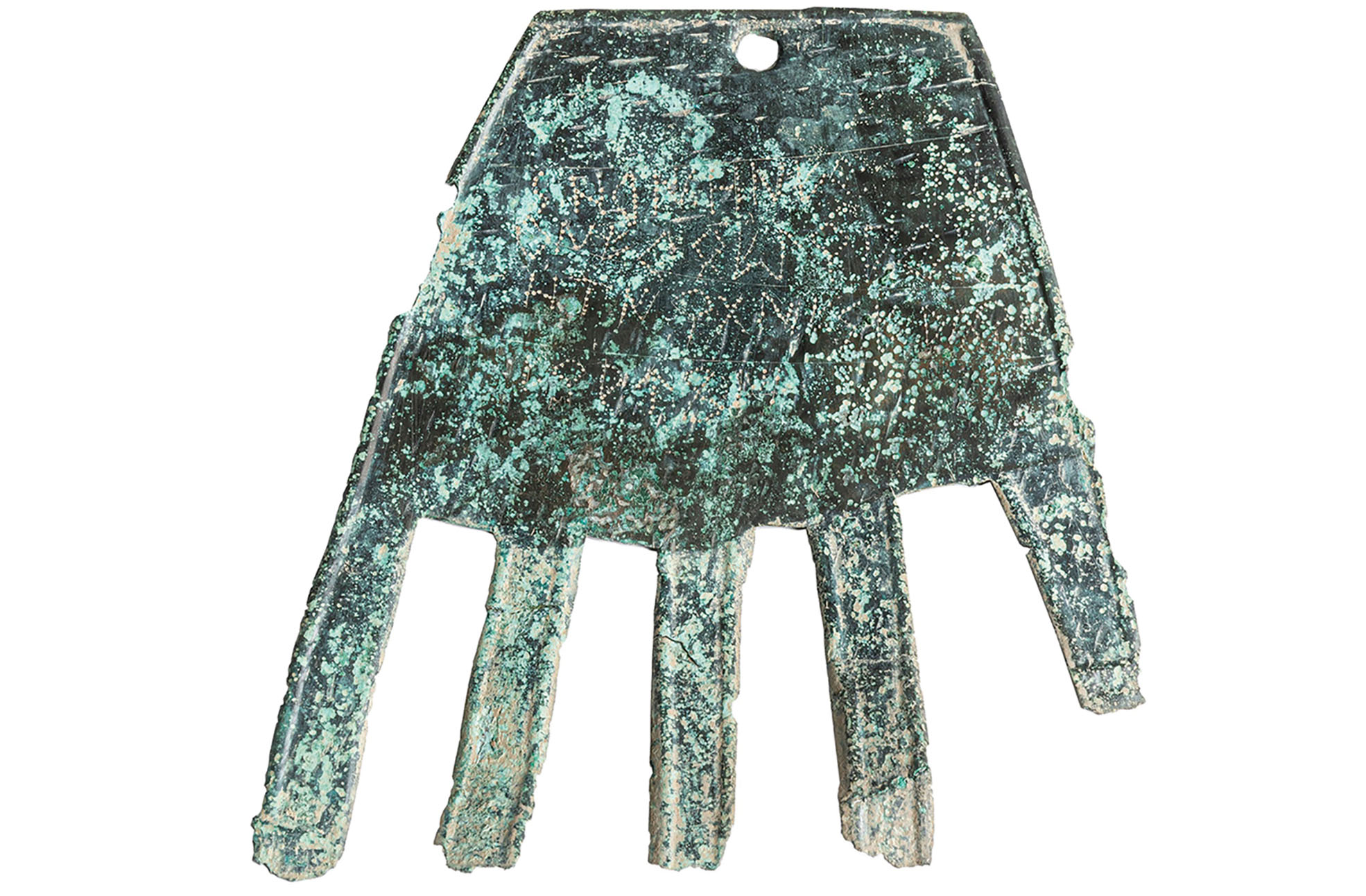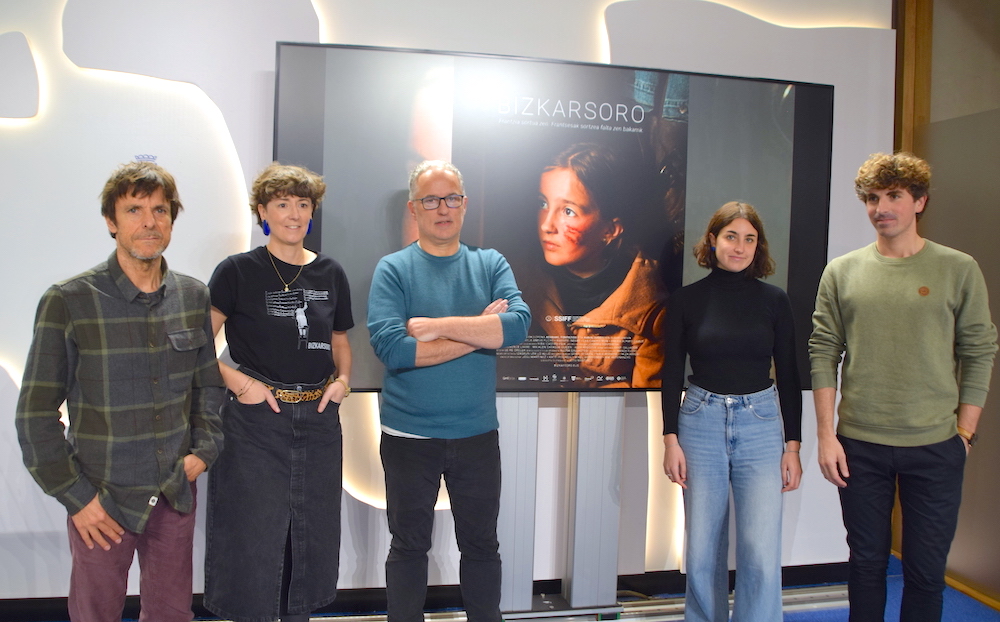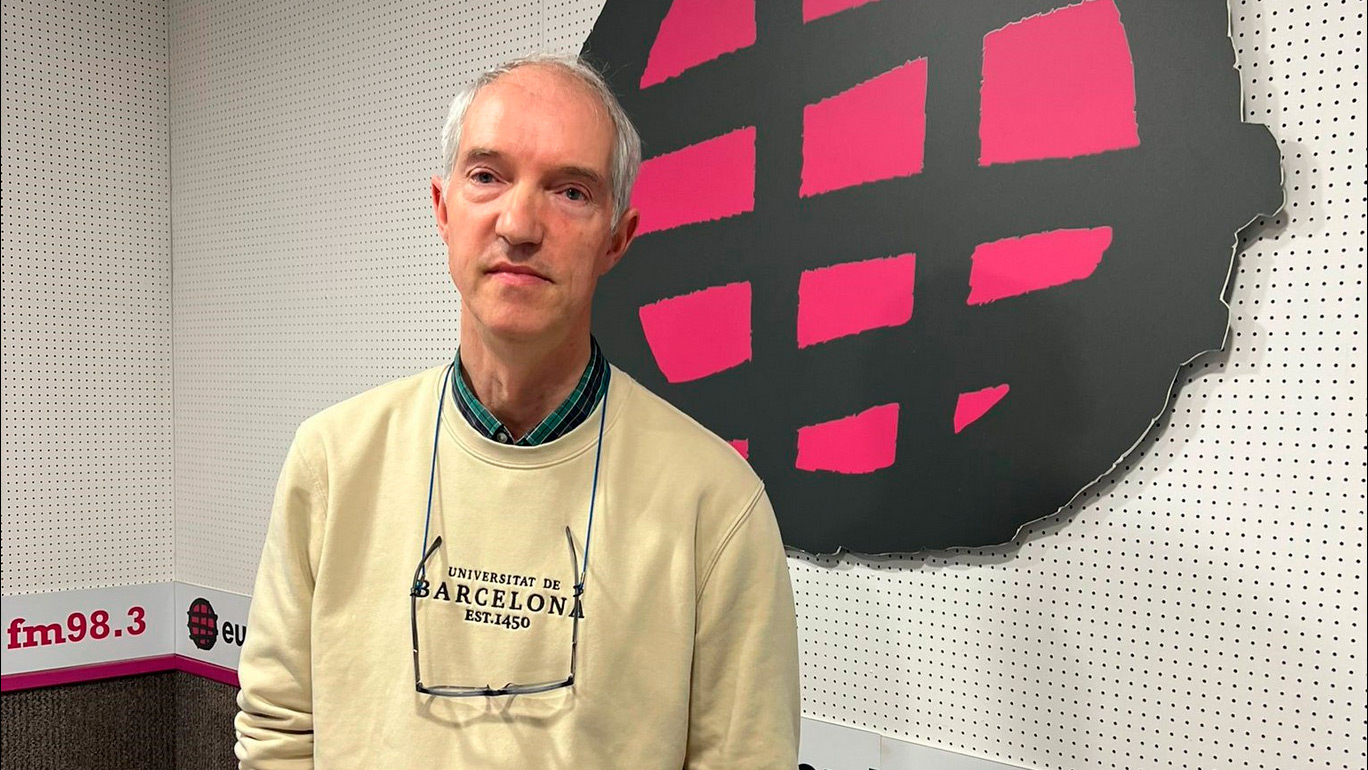The hand of Irulegi, what news does Antiquity magazine bring?
- A group of experts has published in the international scientific journal an article that explains the most “complete” research on the bronze piece exposed in the fortified people of the Iron Age of Irulegi. It incorporates news that we didn't know until now.

When in November 2022 we realized the hand of Irulegi, Mattin Aiestaran told ARGIA that the results of the hand study were going to be published in the journal Antiquity. A little more than a year later, we have in hand the article that gives international scientific guarantee to research, and we can learn more about the excavations and more precise interpretations of inscriptions in ancient Basque.
The article is signed by the excavation director himself, Mattin Aiestaran, the professor of Philology at the University of Barcelona, Javier Velaza, and the UPV linguist and professor, Joaquín Gorrochategui, along with dozens of other researchers, including ARGIA collaborator, Josu Narbarte, who wrote a report on the site.
Two ceramics with inscriptions and a stilus
The article of Antiquity points out that in the Iron Age there are clear indications of the destruction and abandonment of the town of Irulegi in the context of the Sertorial War, as shown in the excavation carried out. However, the analysis focuses on the bronze hand. He says that he has inscriptions written in a “paleohispanic graphic subsystem,” which Velaza has called “vascón” and which for many would be the Old Basque.
But in addition to the hand, researchers have found unique structures and thousands of more pieces in excavations, which we will probably know later on. Some of these materials are related to writing, in the same place where the hand was, like two pieces of ceramic with graphed inscriptions and a stilus, a useful for writing on tablets: “Thus, the hand ensures that the Basques were able to write in their language,” explains the Society of Aranzadi Sciences.
.jpg)
As for transcription of inscriptions, the article introduces a new interpretation. Thus, in the inscription graphed further inside you can read without creating according to the experts, and then in the puncture it would be placed in a place of origin. In addition, the first word in the second row has been transcribed as “te” instead of “ku”.
Nuances of linguists
In early January, in the last issue of Fontes Linguae Vasconum, Irulegi's hand was deeply explored in the collection of articles edited by Gorrochategui and by the philologist at the University of Navarra Ekaitz Santazilia. It stated that it cannot be ensured that the language appearing in the inscription of the hand is a relative of the Basque Country and that this link cannot yet be established. The publication raises a subject of lively debate.
Aranzadi has laid the groundwork for investigating findings on the situation, life, language and beliefs of Vascones
The article of Antiquity also collects these nuances made by linguists, and says that the implications that the discovery of the hand can have for the epigraphical and historical understanding of the “basconic territory”, as well as the possible connections between the Basque and Iberian languages and the modern Basque language, require a “deeper analysis”.
In any case, Aranzadi has laid the groundwork for investigating the findings on settlements, ways of life, languages and Basque beliefs, and the publication of the article in Antiquity represents a “new impulse” to archaeological research and an “international echo of Irulegi”.
Urriaren 26an Iruña-Veleia Argitu, ez suntsitu jardunaldian Zenbat esku daude Iruña-Veleian aurkitutako ostraken testuetan? ponentzia aurkeztu zuen Joseba Lizeagak
“It’s been 18 years since some 400 graffiti appeared on the excavation, 16 years since he was expelled from the excavation camp of Lurmen without scientific evidence and 4 years since the trial was held without clarifying the subject, we can say that we continue to... [+]
Today, all the hierarchies that have been built in our world are the result of a process of global colonization. These global hierarchies of domination are formed by other more specific intertwined hierarchies, that is, classical, ethnic, aesthetic and even linguistic. What we... [+]
In June 18 years ago we started to get to know the paintings of Iruña Veleia. Good news for the Basques.
But the current situation is not so satisfactory. On the one hand, the Provincial Council of Álava (DFA) says that all graphites are false, and that those who think... [+]
As we have known, Joaquín Gorrochategui has been awarded the Euskadi Research Award 2023. SOS Asturias-Veleia hereby expresses its disagreement and discomfort. In our opinion, the deplorable role played by the professor in the Asturias-Veleia case leaves out the merits he can... [+]










